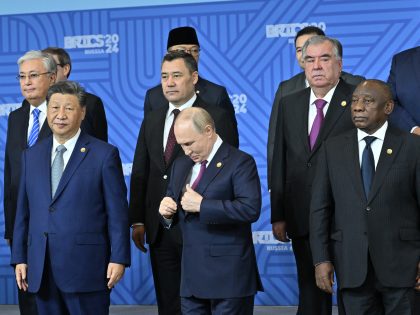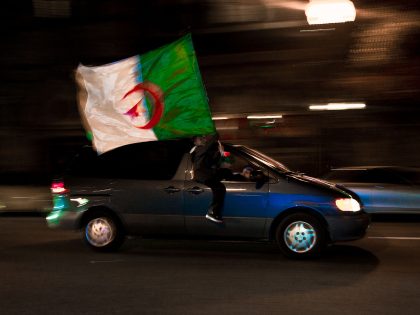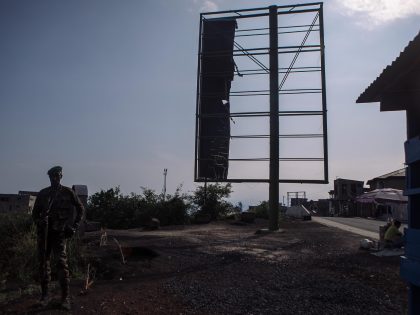Purely as artifacts
Mainstream journalism must stop treating Timbuktu and Timbuktians as artifacts, focusing mainly on manuscripts.

Emilio Labrador, via Flickr CC.
Years of humanitarian and political emergencies in the Western Sahel—including ongoing food and water shortages, secessionist movements, terrorism and outbreaks of disease—continue to go under the radar of most mainstream western media outlets. Even the coup d’état that overthrew Malian President Touré just weeks before elections, the occupation of northern Mali and the subsequent exodus of the region’s residents were relegated to limited paragraphs on the back pages of most newspapers.
Indeed, I was in the United States when the Malian crisis climaxed. I followed the situation as best as I could. However, aside from CNN, the American press left me frustrated with their lack of coverage, and I frequently had to turn to alternative sources. My family and friends expressed similar frustration when they attempted to follow events in Mali throughout 2013, while I was in West Africa. Most talk of actual people—refugees, soldiers, internally displaced persons, terrorists, secessionists, humanitarian workers, government officials, students, activists, and so on—either remained underreported, or left the readers disengaged. What ultimately grabbed the world’s attention was when al-Qaeda affiliated terrorists burned scores of manuscripts housed in Timbuktu’s famous libraries.
Headlines included: “Mali’s Cultural Legacy Threatened”, “Mali Rebels Torched Library of Historic Manuscripts”, and so on. Readers and commentators seemed equally incredulous: How could anyone destroy such artifacts, and why? Many (correctly) articulated that the manuscripts are not only Timbuktian history, but part of world history as well. As such, the wound seemed all the more egregious. And, in response, the international and academic communities began to mobilize in an effort to save the remaining documents.
Later, the rumor mill began producing a new headline: “Timbuktu Manuscripts ‘Have Not Been Destroyed’”. Some papers suggested that as much as 90% of the documents had been salvaged, though such claims remain unsubstantiated. Nonetheless, journalists have been and continue to feature the saviors of the manuscripts, those who defied the “Islamic” government of Timbuktu by sneaking documents south to secret locations in Bamako. When word of that got out, a new conversation began around the question of preservation. How to safeguard the manuscripts so that more are not lost? Furthermore, how to return the manuscripts to their rightful home in Timbuktu?
I do not wish to criticize or undermine the heroic actions—and risks—that certain librarians and archivists took in order to protect some of the Timbuktu manuscripts. Nor do I wish to criticize the press that the manuscripts received per se. What I do wish to criticize, however, is the manner in which the discussion has unfolded and the dramatic lack of analysis outside the context of Timbuktian material culture.
Timbuktu has long been characterized as “ancient”. Indeed, the vast majority of publications—past and present—continue to describe the town as “fabled” and focus on its history. If the town lives at all (in popular, western imagination, that is) it is “endangered”, as “traditional” salt caravans, blacksmiths and calligraphers “fade into the sands of time”. Further, the Timbuktian manuscripts—much like most Timbuktians themselves—are largely treated as artifacts, not as real sources and expressions of Islamic knowledge. Few Americans, in my experience at least, even seem to realize that Timbuktu is real, equating it instead with a mythical, unreachable, faraway place. And, the journalistic emphasis on historical objects, without addressing populations or individuals, reinforces the popular notion that Timbuktu is a medieval, not contemporary, town.
The issue is narrowly—and stagnantly—defining a city, region or culture by something that the western audience consumes. This is the case of Timbuktu, as well as other West African and Saharan towns, from Oualata to Djenne to Gao. And, we see this in other parts of the continent, too, where conflict is met not with outrage over violence and loss of life, but instead with anguish over the loss of monuments, music, and so on. Such anguish parallels the patronizing anxiety that many westerners express vis-à-vis African urbanization and the “loss” of “traditional” rituals and indigenous languages. So often placed in the passive voice, such concerns overlook African peoples in favor of the objects they produce.
Focusing the examination of the Malian crisis on manuscripts narrows and simplifies the conflict. Instead of developing a more informed western audience, such analyses risk reinforcing the colonialist and orientalist notion that Africa exists as a source of western consumption, not as a place of diverse, contemporary and creative individuals with whom one should dialog. The manuscripts should interest us not because they are old but because they contain valuable insight. As such, we must stop treating them purely as artifacts. Similarly, mainstream journalism must stop treating Timbuktu and Timbuktians as artifacts, considering northern Mali—both within the context of crisis and without—as a complex and contemporary place with complex and contemporary individuals.



















